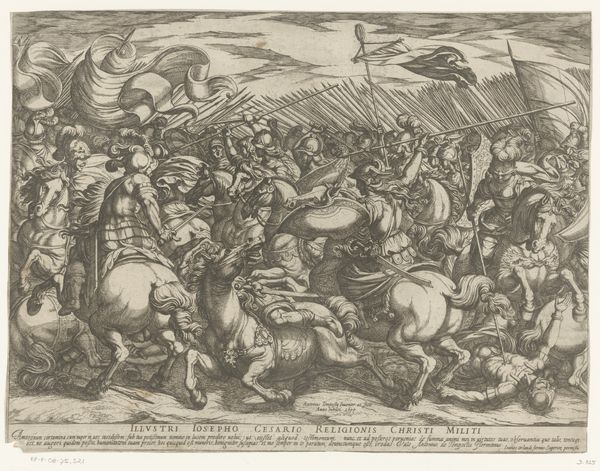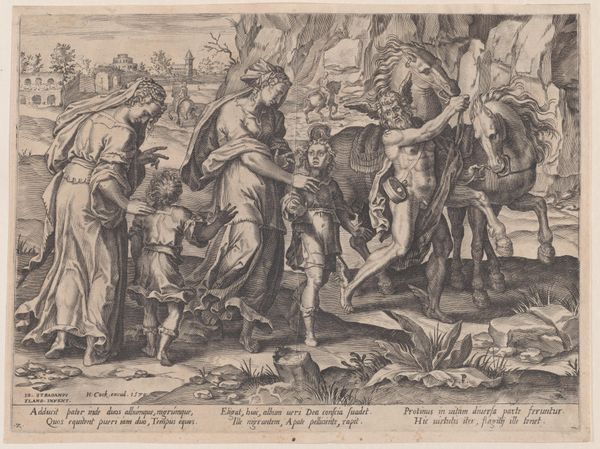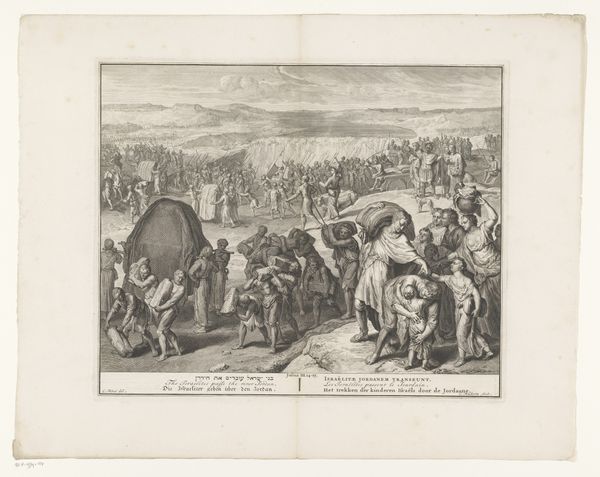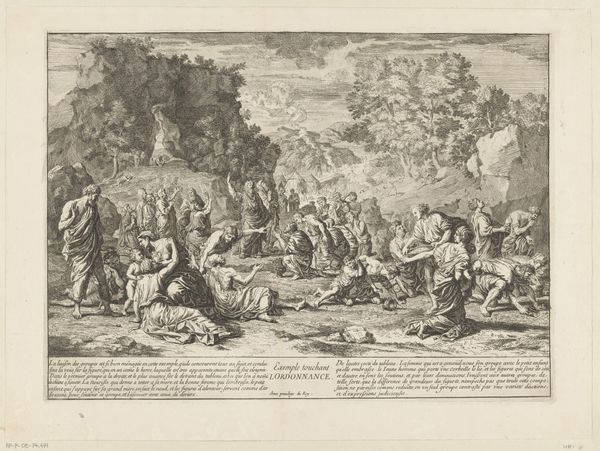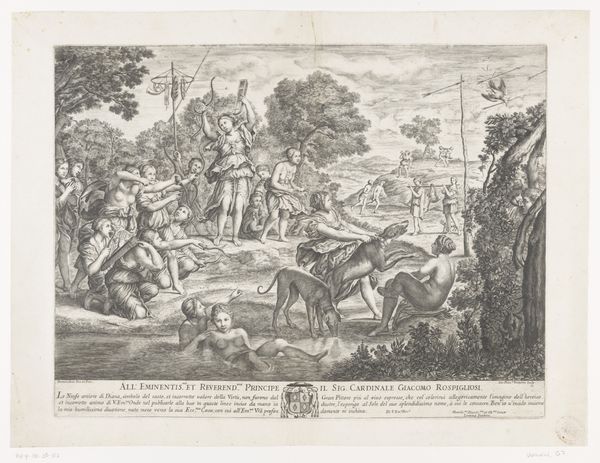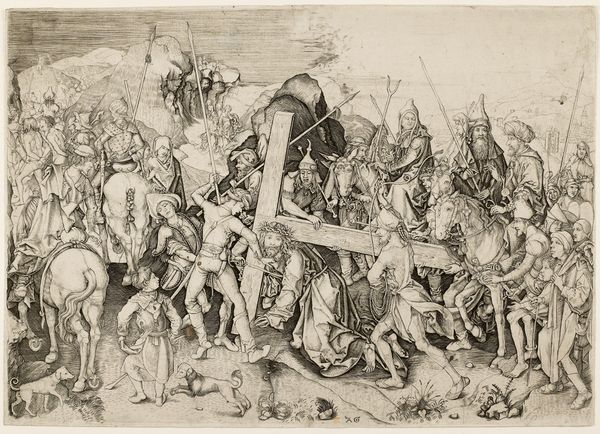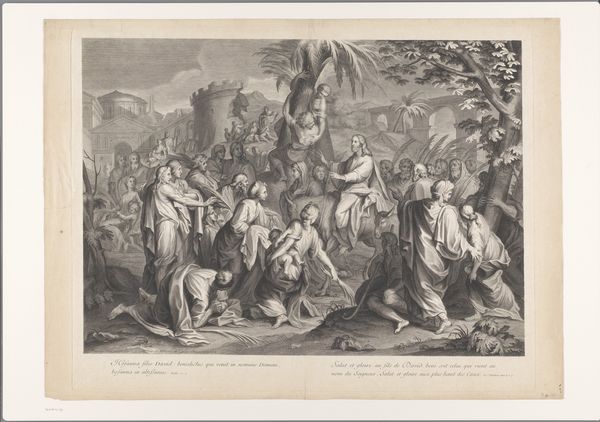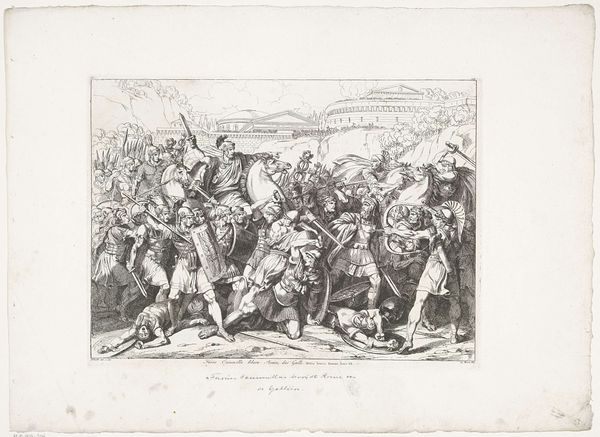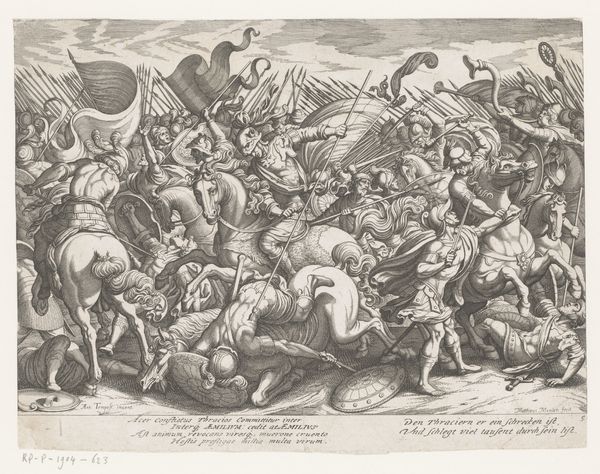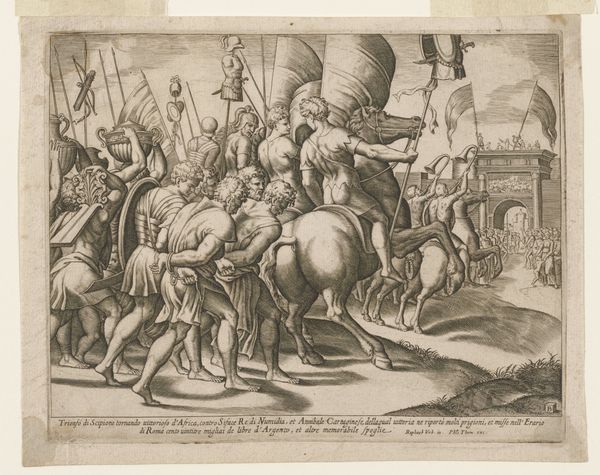
print, engraving
#
portrait
#
baroque
# print
#
pen illustration
#
caricature
#
figuration
#
geometric
#
line
#
history-painting
#
engraving
Dimensions: height 492 mm, width 774 mm
Copyright: Rijks Museum: Open Domain
Editor: This is “Ontmoeting tussen keizer Otto III en de heilige Nilus,” or “Meeting between Emperor Otto III and Saint Nilus,” an engraving by Charles Louis Dufresne dating between 1645 and 1711. It depicts a regal meeting, but what strikes me most is the level of detail achieved through line work alone. What stands out to you about this print? Curator: For me, the print's power lies in understanding its production. Engraving was labor-intensive, a skilled craft honed through years of apprenticeship. Dufresne, like other printmakers, was essentially operating within a commercial system, fulfilling commissions. The historical context—the Baroque era—is also vital. The Church's influence was huge. It directly affected not only production methods, with apprentices and workshops, but also what and how artworks communicated religious and political stories. What do you think the use of line and geometry may have been trying to signal? Editor: That's fascinating! Considering its commercial aspect and the repetitive labor required, do you see this challenging traditional views of the artist as a singular genius? The lines look meticulously planned, even mathematical. Maybe geometric precision symbolized divine order, aligning the earthly power of the emperor with the spiritual authority of the saint? Curator: Precisely! It challenges that romantic notion of solitary genius. And that geometrical precision likely did symbolize a divinely ordained hierarchy. We see a dialogue between craft, patronage, and the construction of power. Consider the materials: the paper, the ink, the copperplate itself. These are all commodities. How does this awareness reshape your understanding of the work? Editor: Thinking about the materials and the production process, it makes me appreciate the skill involved, but also question the social implications of art production back then. So much artistry depending on wealth and the Church! I hadn't really considered how it all ties together like that. Curator: Exactly. By focusing on the material conditions and production processes, we gain a richer, more critical understanding of this image and its place in history. We can then appreciate that an object’s context profoundly influences both its creation and meaning.
Comments
No comments
Be the first to comment and join the conversation on the ultimate creative platform.
